Final Fantasy X Review
Final Fantasy X takes place in the world of Spira – a world which revolves around death. Spira is threatened by an evil entity known only as “Sin”, which wreaks havoc on the world of Spira, levels whole towns and cities, and kills many. Spira’s only light are the summoners, who after undertaking a long and dangerous pilgrimage, arrive at the thousand-year-old ruins of Zanarkand, an ancient lost city. Here, they achieve the final summoning, and with it, the only way of defeating Sin.
You play as a guy called Tidus, who is mysteriously teleported via sin from Zanarkand to Spira, one thousand years later. Tidus joins Yuna, a summoner, Wakka, Kimahri and Lulu, Yuna’s Guardians, Rikku, a hyperactive Al Bhed girl, and Auron, a mysterious man whom Tidus had met in his old Zanarkand.
Together, the band aid Yuna on her pilgrimage to attain the final summoning, and defeat sin. However, startling revelations and gut-wrenching plot twists typical of the Final Fantasy series ensue.
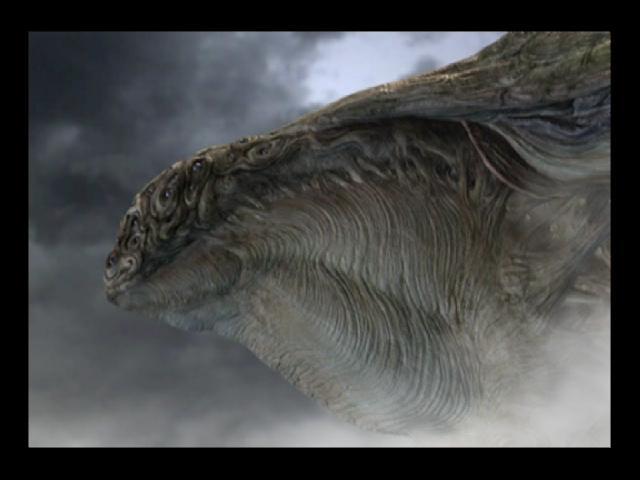
The game is extremely long-lived, lasting around 40-50 hours to complete the main game, and a hell of a lot longer to uncover secret aeons, plot info, and the like. For fans of the previous games, it is most certainly not a disappointment.
It’s all there, the turn-based combat, intricate storyline and characters, and just about anything else that defines a good Final Fantasy Title. For old fans and newcomers to the Final Fantasy series alike, this game is extraordinary in every way. Certainly, THE role playing game for the Playstation 2.
The battle system on Final Fantasy X is pretty enjoyable. It revolves around turn-based action, much like the other Final Fantasy installments before it. On the battlefield, you can have up to 3 different characters fighting at a time, and you are given the option to switch between them freely every turn, simply by holding the L1 button and selecting a party member that is currently not on the battlefield.
This feature is very useful, but not as much as you may think. Certainly, it is an improvement on the previous Final Fantasies, where there would be 3-4 characters onscreen and that was it. No Change. If all three characters onscreen die though, it is still game over – the others will not come to their rescue and continue the battle.
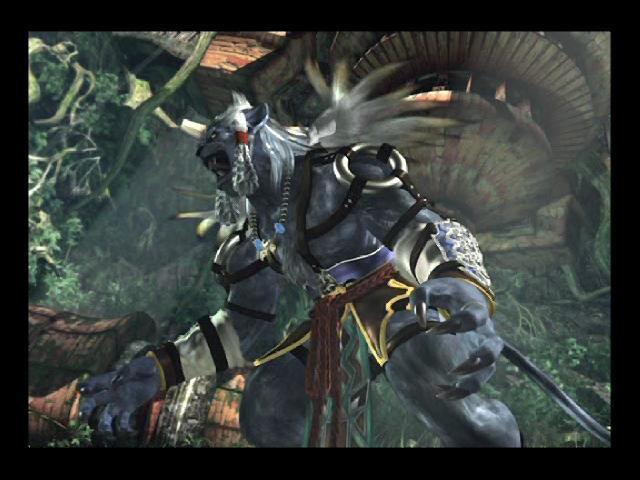
As on many RPG’s, weapons and armor are equipped before battle, and each offers different defense, speed, attack, evasion (etc.) bonuses, and adds support abilities that allow the character or weapon to perform certain moves, gain extra money or AP, inflict status effects, counterattack, etc. At the start of the game, the only way to get weapons with different abilities is to find or buy them, but later on when Rikku joins the team you can customize them, and provided you have the right amount of the right items, add any ability you see fit.
There is now also the choice of switching armor and weapons during battle. This can be especially useful if you have no idea which foes you will be facing or their weaknesses, and also allows you to equip yourself so that you are in a higher position to the enemy e.g. you find out that this particular enemy likes inflicting poison, so you change to armor which guards against poison.
There is also a bar on the top right of the screen, which indicates whose turn is when during the battle. This makes the battles a lot easier to plan for and decisions as to what moves to use, items to use etc. easier to make.
Leveling up is also very different from previous Final Fantasies. Instead of going up levels, by receiving EXP after the end of each battle, your characters receive AP and depending on how much they gain, go up Sphere Levels.
These Sphere levels are spent on moving around the Sphere Grid, which is kind of like a board game, but each move either teaches the corresponding character a new move, support ability, or enhances his or her health, power, defense, evasion, speed, and so on.
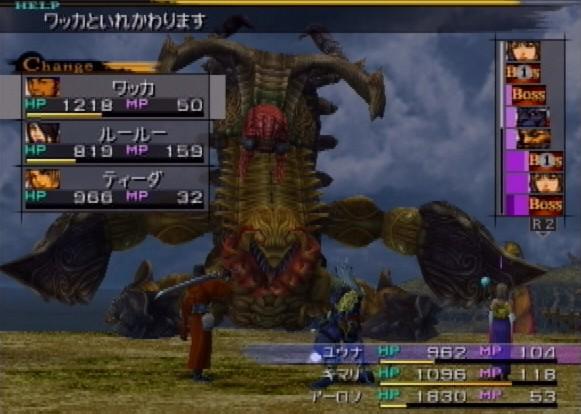
This sphere grid idea means that you don’t have to have simply a warrior, thief, blue mage, black mage, and white mage – completing the sphere grid means that your character will be master at all of these skills and will ultimately kick a pretty huge amount of enemy ass. The international or European versions of the game include both Expert and Normal Sphere grids, though the Japanese and American versions lack this.
The expert sphere grid allows greater freedom of movement around the grid and has more nodes, meaning that right from the start; you can choose whether you want a certain character to be a mage, warrior, thief, etc.
The sphere grid system is unique to Final Fantasy X, and has received mixed criticism. Some say that it gives further control and sense of the character’s development – whereas other fans argue that it is an annoying departure from the ‘tradition’ of leveling up in all the previous Final Fantasies.
Most if not all of the previous Final Fantasies involved some sort of ‘power’ or ‘rage’ move. (i.e. FFIX involved ‘trance’ and FFVII involved ‘Limit Breaks’) And in Final Fantasy X, this is known as an ‘overdrive’. It works a lot like the limit breaks from Final Fantasy VII, but you have more control over how these overdrive modes are induced.
As the game progresses, characters will learn different ‘overdrive modes’ which allow overdrives to be induced in different ways. For example, ‘stoic’ mode means the overdrive gauge will fill up when the character is attacked, whereas ‘warrior’ mode will fill it up when the player inflicts damage on the enemy, and ‘ally’ mode does so when onscreen allies are attacked.
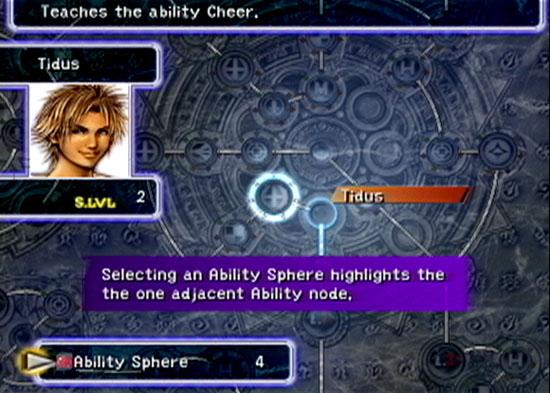
When the overdrive gauge is filled up, instead of attacking, the player can press left on the D-pad and select an overdrive move. These vary from character to character – Tidus and Auron’s limit breaks are basically fancy powerful attacks, whereas Lulu has the ability to cast a certain spell many times, and Yuna can summon powerful aeons (Final Fantasy X names for the creatures that can be summoned to fight for you) With their overdrives filled, so that they can then unleash an awe-inspiring overdrive attack. After using an overdrive, the gauge returns to empty and the battle continues as normal.
As in any Final Fantasy game, each character has his or her own attack class and attack abilities to begin with. With the new sphere grid system, this can be changed as far as you like, but each character does have their own ‘default’ path along the grid.
Tidus is our main character, and he attacks more than anything, although he is largely outdone by Auron. Kimahri is the Blue Mage of the game, meaning that he learns Blue Magic from enemies which he then uses in his overdrive moves.
Lulu is the Black Mage, and casts powerful elemental magic. Yuna, our white mage and summoner, both summons and casts white magic, which heals HP, and can either protect or cure status effects. Rikku is our thief and item-user, which means she has the ability to steal, and use items such as grenades and other such throwing things.
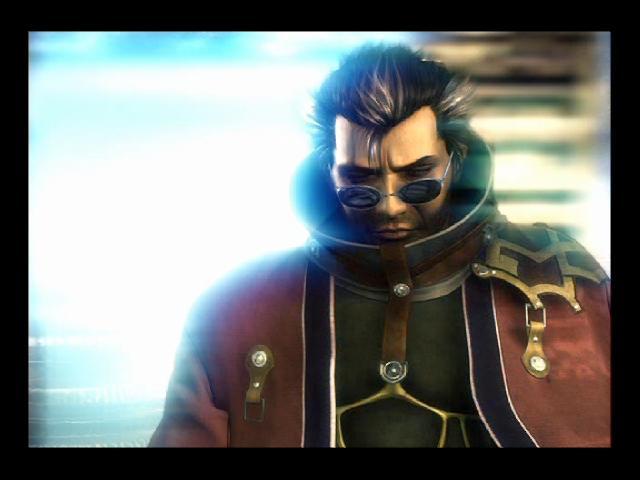
Rikku is an Al Bhed which means if she steals from machina (Fancy FFX word for robots) she will disassemble them, which is a lot easier and more effective than politely poking it with swords and the like.
Final Fantasy X is a very long-lived game, this is because the story is very complex, and is guaranteed to have you enthralled. Starting out the game you may well think the plot is pretty straightforward “Kill monsters, get to Zanarkand, do the final summoning,” but really, that is but the tip of the iceberg.
There are so many revelations, plot twists, so much character development, and everything you could really expect from any Final Fantasy game – Fans of the series will know the drill, and newcomers will be enthralled. Although argued to be simpler and therefore ‘dumbed-down’ from previous games in the series, the story is most definitely one of the greater aspects of the game.
Another great addition to all of this and the longevity of the game is the sheer amount of side quests one can do. From training Chocobos (Big yellow ostrich-like riding birds) to building and training the ultimate Blitzball (Underwater ballgame) team, there’s something for everyone. Long after completing the game, the side quests still keep the player interested for hours more.
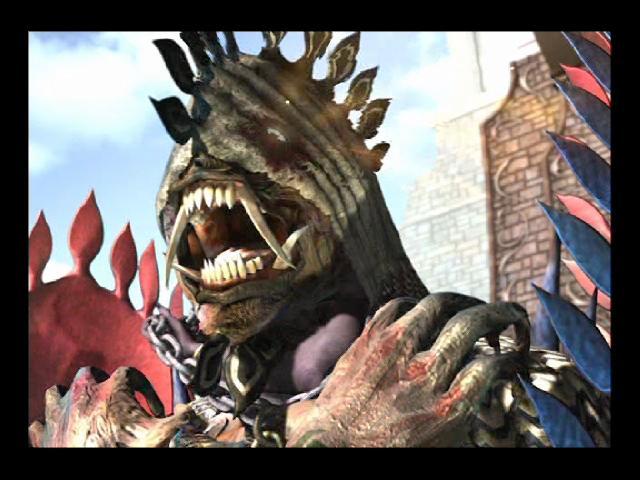
Adding to this, there is a huge amount of secrets to be uncovered too – secret aeons that are not necessarily relevant to the storyline but add to it and help you out immensely, uncovering Al Bhed primers so that you can understand what the Al Bhed say, collecting all the celestial (ultimate) weapons… there really is no end.
The characters, as with any Final Fantasy, are all extremely well developed, each with their own enticing back-story, character, mannerisms, and secrets to uncover and learn about. The characters are extremely well developed and continue to develop throughout even the non-compulsory side quests. Many are easy to relate to, and all are not what they seem to be at first.
Up until Final Fantasy X, Nobuo Uematsu has never had any assistance in composing music for Final Fantasy Games, but for Final Fantasy X, both Masashi Hamauzu and Junya Nakano contributed to the soundtrack.
As with any other Final Fantasy game, Final Fantasy X’s soundtrack is superb. The music is extremely fitting and of course, well composed. Many players will find themselves subconsciously humming the memorable tunes of the game, bobbing their heads up and down, or even humming it in the school or workplace.

One slight drawback on Final Fantasy X is the voice acting. Of note in particular was the direction of the main character, Tidus. Many fans were outraged at Tidus’ annoying, loud, childish, winging and high-pitched voice. Some may remember James Arnold Taylor’s voice as Ratchet from the popular Ratchet and Clank series.
In Final Fantasy X however, Square could have delivered much better English localization, improved by better direction or writing. Everything feels like it’s pushed to an extreme - Tidus’ voice is annoyingly childish, Rikku’s unbearably hyperactive, and Yuna’s is almost too quiet, the voices a caricature of the characters themselves.
The rest of the voice actors do a fairly good job, Auron and Lulu’s voices are particularly well-liked by fans – and with great justice, too.
The graphics, again, are what’s to be expected from Square’s Final Fantasy series. Most definitely a work of art all the way through, Final Fantasy X will stun anyone – especially seeing as it was released so early for the Playstation 2. Not only are the real-time graphics marvelous, the CGI cutscenes are immense. Players are greeted by an example of such awe right from the start of the game, with a stunning CGI scene of Tidus playing Blitzball.
Overall, Final Fantasy X is an experience no RPG gamer should go without. Square’s typical combination of an awesome storyline, great gameplay, superb battle system, easy-to-learn controls, fabulously developed characters, stunning visuals and downright awesome music is enough to enthrall anyone. Every true RPG gamer has played a Final Fantasy title – and it’s to you RPG gamers I speak when I say this:
Go buy.